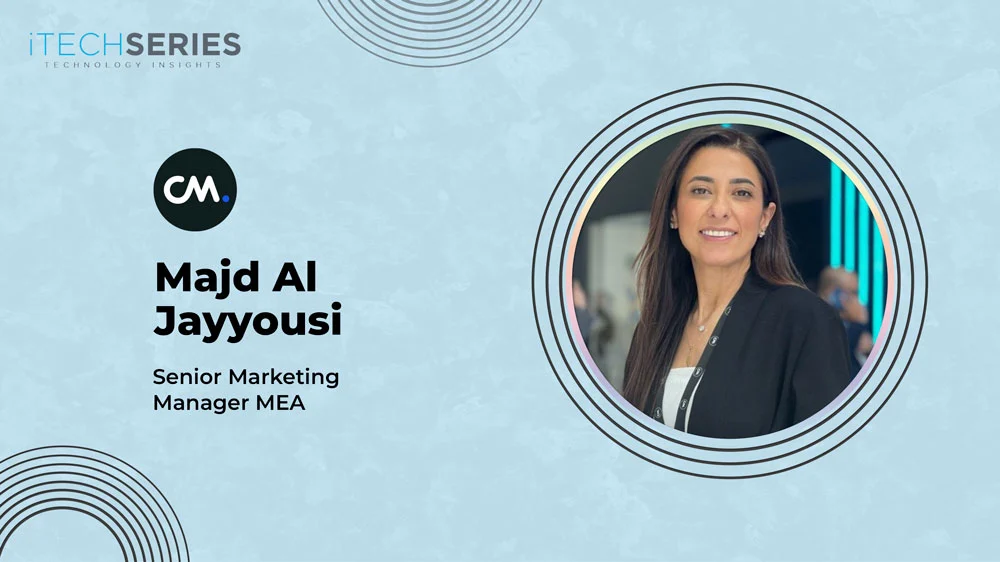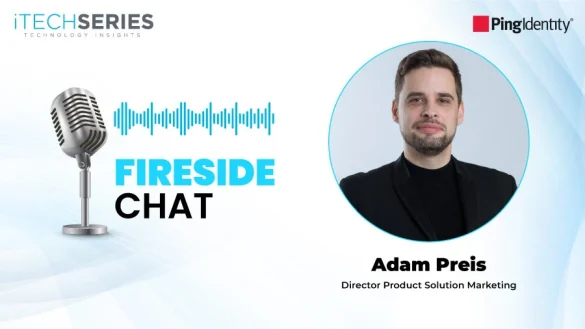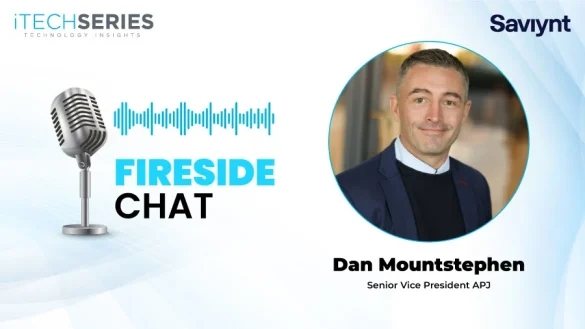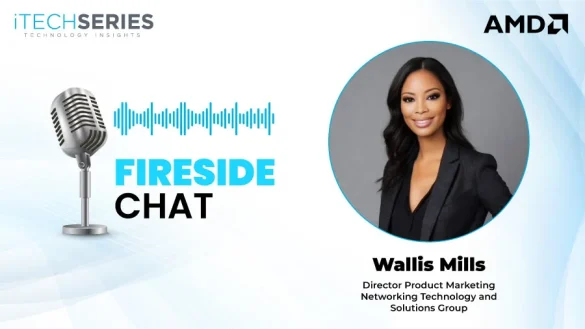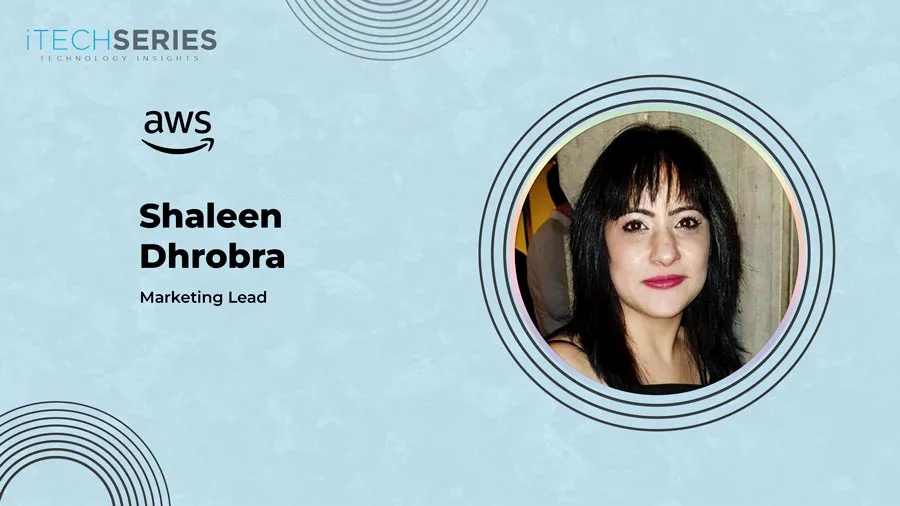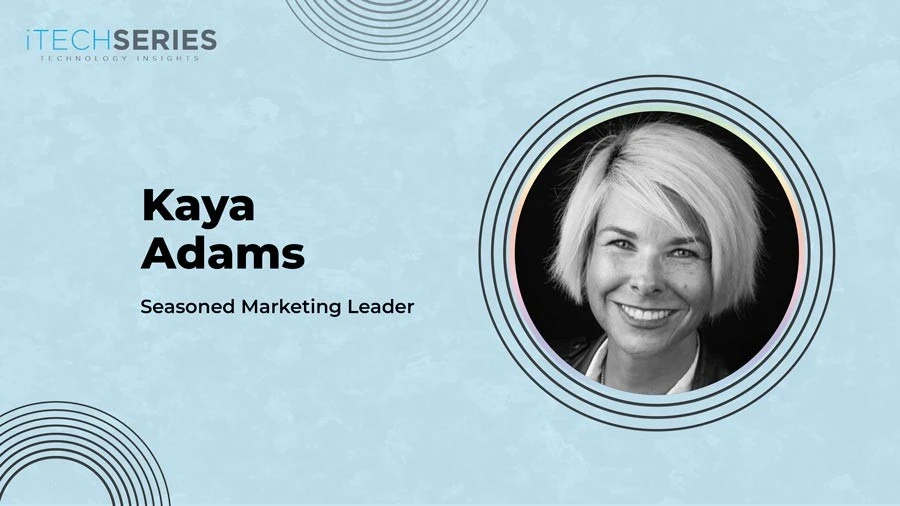In this interview, Majd Al Jayyousi, Senior Marketing Manager at CM.com, shares her insights on navigating the tech industry’s revenue-driven marketing initiatives, aligning marketing with sales and customer success, and deploying AI-driven, hyper-personalized experiences for seamless customer journeys.
It’s so great to have you Majd. Tell us about your journey as a marketing leader.
I am thrilled to share my journey; thank you for having me. As a millennial, majored in marketing and MIS, I feel fortunate to have started my career in traditional marketing. Throughout my experience, I have held several B2B marketing roles in the tech industry, which have significantly shaped my path. Over the past decade, I have witnessed the marketing industry transform-everything evolved to digital; data is available in real-time, and optimization is just a click away. As a passionate marketer, I enjoy data analysis, understanding target audiences and personas, and revealing meaningful insights to drive informed decision-making. My main objective spans around attributing revenue to marketing initiatives, ensuring we can clearly measure the impact of our strategies. In my role as Senior Marketing Manager at CM.com for the Middle East, I lead and implement full-funnel online and offline plans and initiatives, helping companies deploy AI-driven conversational software to craft hyper-personalized experiences and ensure a seamless, end-to-end customer journey.
In the revenue-focused environment, how has marketing’s role evolved, one that requires more coordination with sales, customer success, and RevOps?
Marketing function has evolved to become a strategic, customer focused revenue-generating discipline that requires deep integration across the customer journey. Functions like sales, customer success and revenue Ops orchestrate together to create business success.
Marketing and Sales are more aligned and work closely, sharing common KPIs, strategies, and goals. Campaigns now are more targeted using sales insights and constructed based on an ABM strategy targeting various verticals. Modern marketing doesn’t stop after a prospect, or a lead becomes a customer. By collaborating with the Customer Success team, Marketing can also engage with customers in developing success stories, gathering testimonials, and creating case studies that further strengthen marketing efforts and sales pitches.
Revenue Ops is what connects all the dots together. Part of my role is reporting on revenue-related metrics from online and offline marketing activities and measuring the contribution of Marketing as a source which is visible via the revenue ops dashboards and reports. Being aware of the current performance and potential revenue impact ensures our strategies are both data-driven and aligned with overall revenue business goals.
What challenges do you face when creating and implementing marketing strategies for the Middle East region?
The Middle East region is huge and very diverse, so you cannot get away with one solid strategy. The Gulf region, becoming an important business hub, is relationship-driven, with customer intimacy and strong purchasing power being key factors. Meanwhile, businesses in other Middle Eastern countries are far more result-driven and price-sensitive due to the economic challenges they face. In addition, cultural nuances and local market trends also play a significant role in shaping marketing tactics. I make sure that I thoroughly understand these dynamics to craft targeted, effective campaigns. I cater to all these factors when defining the marketing strategy and approach for the region.
How do you leverage data and analytics to inform your GTM strategies and improve lead-generation efforts?
Data can tell the story of the past, but it’s also an invaluable tool for predicting future trends. With the right analysis, we can uncover opportunities that may not have been obvious before. Leveraging data and analyzing the historical figures helps in understanding the potential to grow in our market, enabling us to identify new areas for expansion. It also serves as a base for the GTM strategy and gives clear insights into the trends and segmentation per vertical that are relevant to the business offering. Based on those actual figures, a better understanding of the areas of strength and weakness will help shape the GTM strategy and plans. This data-driven approach empowers solid decisions that refine the demand generation activities.
“Marketing function has evolved to become a strategic, customer focused revenue-generating discipline that requires deep integration across the customer journey.”
What was your interesting marketing campaign experience?
One of the interesting campaigns I managed was an in-house “Lead Qualification Campaign” designed specifically for one of our flagship events in the region. This campaign stood out because it was interactive and strategically aligned with our goal of moving qualified leads smoothly through the funnel. What made it unique was how we integrated our own solutions at CM.com to showcase the onboarding journey to our prospects. Essentially, we invited them to experience firsthand what it is like to interact with our products. As part of this experience, we set up a crafted series of marketing messages that walked prospects through the journey. The real highlight, however, was the scripted chatbot we integrated into the campaign. This chatbot was programmed to simulate a natural conversation, engaging prospects by asking them a series of targeted questions designed to qualify their interest. Once a prospect met our qualification criteria, they were automatically advanced to the next stage in our process, becoming a Marketing Qualified Lead.
As a leader, how do you inspire and guide your team to achieve their marketing goals while fostering a culture of continuous improvement?
I believe in keeping a positive attitude, especially in challenging situations or under tight deadlines. A leader’s mindset sets the tone for the team, and optimism fosters creativity and perseverance. I see setbacks as opportunities for growth rather than as failures. When a project does not go as planned, I openly discuss it with the team to understand what we could improve for the future. Mistakes are simply part of the learning process, and by talking about them openly, we develop better strategies and build a stronger, more resilient approach moving forward. Encouraging open dialogue and collaboration helps create an environment where innovation thrives. This mindset keeps me motivated and helps inspire the team to stay solution-focused and optimistic.
As a marketing leader, which key metrics do you keep a close eye on to track campaign performance?
Tracking the right metrics is very important for understanding campaign effectiveness and optimizing future performance. I believe that monitoring these metrics regularly helps ensure consistent improvements. Usually, the KPIs depend on the campaign objective and the goals you set to achieve. However, generally speaking, a key metric that I carefully monitor is the conversion rate from a lead to an opportunity and their contribution to the sales pipeline. Another metric that I follow is the ROAS, which correlates with the revenue generated per dollar of investment. Additionally, I pay attention to customer acquisition costs and the lifetime value of customers, as these help measure long-term success. Focusing on those two high-level metrics ensures alignment with revenue goals, cost-effectiveness, and campaign performance.
As a marketer, what’s the biggest lesson you’ve learned from integrating AI tools into your marketing processes?
AI has become a powerful enabler, with most companies integrating it into their daily operations to stay competitive and enhance CX. In marketing, AI is transforming how we gather insights and engage with customers. It allows us to streamline workflows, deeply understand audiences, and personalize interactions on a large scale. While it is tempting to use AI for everything, it cannot replace the strategic thinking marketers bring to the table, where capturing the full scope of the business and its unique dynamics is essential. The true impact of marketing still relies on human creativity and the ability to reflect the current status of the business with all its elements. Therefore, businesses should strive to balance automation with human involvement to achieve optimal results.
CM.com is a global leader in cloud software for conversational commerce, dedicated to enhancing customer experiences. Our innovative communications and payments platform empowers marketing, sales, and customer support teams to automate customer engagement across various mobile channels. By seamlessly integrating payment capabilities, CM.com helps businesses drive sales, acquire new customers, and boost customer satisfaction. CM.com is transforming the way companies connect and interact with their audiences worldwide.
Majd Al Jayyousi is a B2B SaaS marketing leader with extensive experience in corporate branding and demand generation across various touchpoints. With a background in marketing and MIS, she has excelled in multiple B2B marketing roles within the tech industry. Currently, as Senior Marketing Manager at CM.com, Majd focuses on implementing full-funnel strategies that leverage AI-driven conversational software to deliver hyper-personalized customer experiences and effectively measure the impact of marketing initiatives on revenue.

